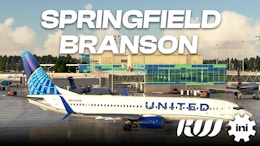The Supermarine Spitfire is a plane that barely requires an introduction. It is one of the heroes of World War 2, and the Battle of Britain specifically. The plane was designed by R. J. Mitchell, although he would sadly never live long enough to see what his plane would eventually be capable of. R. J. Mitchell passed away in 1937.
Aeroplane Heaven’s rendition of the Spitfire is that of the Mk1A. As the name might suggest, this is the first version of the Spitfire. It would later lead to many different variants with several differences over the original. In this review, we will dive into Aeroplane Heaven’s latest release and see how well made it is, and how such a vintage plane holds up in our still relatively new simulators.
Installation
I installed Aeroplane Heaven’s Spitfire Mk1A through Orbx Direct. This meant that the installation process was as simple as clicking a few buttons. The download process started automatically and the plane was ready to use within mere minutes. But before we get into our sim, I quickly want to touch upon the documentation.
Aeroplane Heaven has included two documents with the add-on. One is a self-made manual; it contains a lot of cockpit familiarisation, a simple checklist and a few nice-to-know features. The company has also included a scanned copy of the original Spitfire I Merlin II manual as it was printed by the Air Ministry. It certainly goes to show how much faith Aeroplane Heaven has in their simulation to include the real manual for in-sim performance reference. Although I am sure there will be people that appreciate the inclusion of such a manual, oftentimes the scans are very hard to read due to the scanning quality. Furthermore, there is a lot of information that is absolutely unnecessary for our simulators, either due to a lack of simulation or due to a lack of relevance. It makes it harder to find the actual pieces of information that do matter, such as climb or cruise performance. Aeroplane Heaven’s own manual barely makes a mention of how to fly the plane, and as such, the plane is not entirely welcoming to newcomers. For me personally, it helped that I had previous knowledge of the plane and its performance, albeit for a different Spitfire Mark.




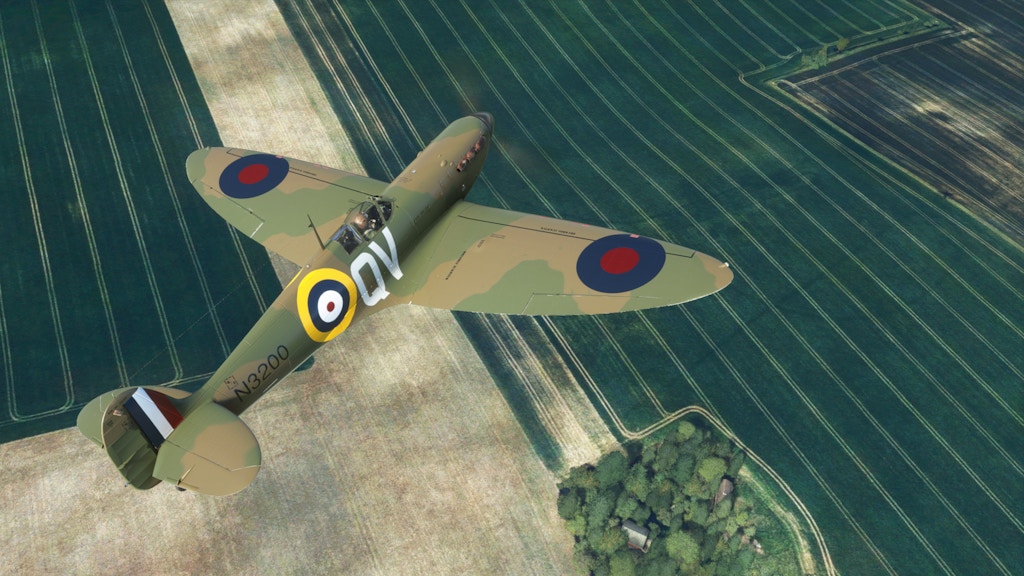

Model and Textures
Once you load up the plane in the simulator, you can choose from several included liveries. The liveries are all very nice looking and of high quality. The exterior textures are absolutely gorgeous: very high in resolution and very crisp. The plane shows an appropriate amount of wear and tear where relevant, such as on the wings where the pilot would get in and out of the plane and around the engine ejector exhaust. The interior of the plane contains a few controls that affect the plane exterior: there is a battery cart that is visible outside of the plane, you can ‘remove’ the pilot from the cockpit and their harness will become visible on the wing, and you can remove the engine covers to inspect the beautiful Merlin II engine. You can clearly see that a lot of time and effort has gone into the exterior model.
On the interior, things appear to be just as gorgeous. The level of modelling inside the cockpit is of similar high quality as can be found on the outside. All the elements have been modelled to incredibly high quality, even if they are just there for cosmetic purposes and don’t actually function. The textures display a nice element of wear and tear to them, a very nice sign of an aircraft that has seen a lot of action. The weathering of textures is done very nicely and in appropriate places. Sadly, once the initial ‘awe’ is over, you will start to notice a number of low quality textures in the cockpit. These are not the kind of textures that you barely ever look at. There are low resolution textures on the cockpit elements that are right in front of you. This is most notable on the actual airframe textures themselves as well as the wear and tear on several cockpit instruments such as the radiator handle or landing gear handle box. These textures are of such a low quality that it is quite jarring and obvious. A big missed point in an otherwise very nice looking cockpit.
Before we dive into the systems and flight dynamics of the plane, we need to discuss interacting with the plane briefly. To begin with, as I mentioned before, the documentation features a start-up guide to the plane. Furthermore, the plane includes an in-sim checklist that is very useful for people that have never flown this plane before. However, if you are new to this aircraft, you might still struggle a little. The checklist does not use MSFS’s “hotspot indicator”, that will highlight cockpit elements for you or show you where in the cockpit they can be found. Furthermore, there are a lot of discrepancies between how the documentation, the checklist and the in-sim labels refer to instruments. So you might have to spend some time studying this cockpit to figure out what elements labelled in the cockpit are named differently in the checklist and the documentation.
Furthermore, the plane has an issue with click spots. Some click spots get in the way of certain elements, such as the one to remove the engine covers or that of the pitot heat. This can get a little bit cumbersome when you need to move the camera all the way around to interact with certain elements.
Once you do manage to interact with all the elements, you’ll notice that some of the switches are missing animations, and will simply toggle between their different states. This is not the case for all elements. The magnetos, for example, clearly animate and move between states. But other switches lack this animation, which feels like a lack of refinement. Last but not least, if you happen to fly this plane during night time, the beacon light shines through the cockpit elements onto your instruments, which breaks the immersion.



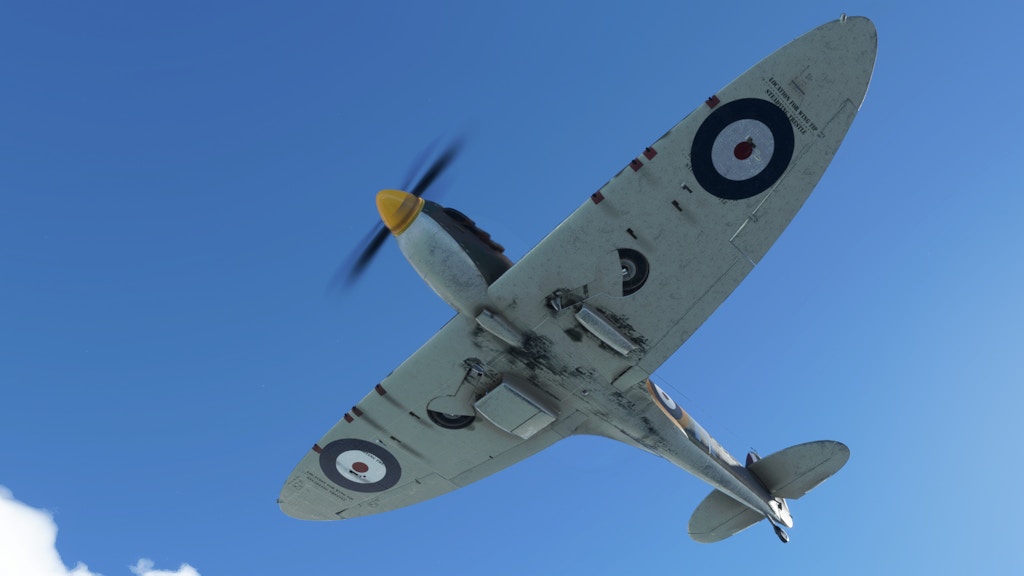
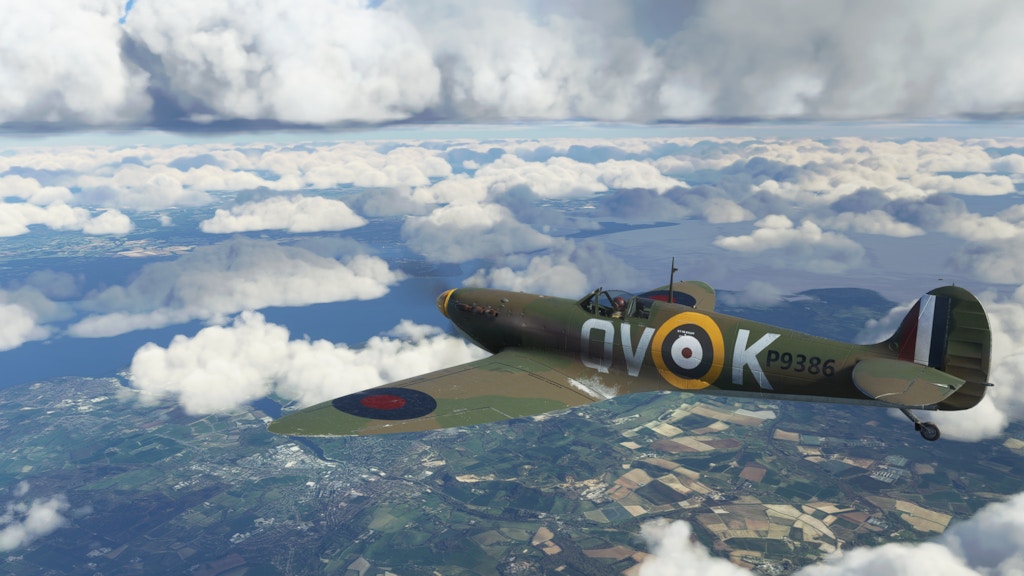

Flight Dynamics
It’s time to get the impressions out of the way, and talk about flying this plane and managing its systems. The Spitfire’s Merlin engine is quite a handful to manage and you need to carefully watch your temperatures. Doing so is a balancing act between the temperatures and the performance. The Spitfire easily runs hot, so as a pilot you need to keep a close eye on your oil and coolant radiator temperature. These can be managed by operating the radiator flap as well as the propeller control and throttle. The latter two of these are used to manage your prop RPM as well as how much air pressure the supercharger feeds into the engine. This is referred to as ‘boost’. The boost and RPM can be increased for short periods of time, but your engine should eventually overheat if you don’t manage the RPM and boost properly. The pilot manual can be used to refer to the proper climb speed, boost and RPM values that the engine can maintain for certain periods of time. However, I found that the Aeroplane Heaven Spitfire runs rather “cold”. The temperature performance does not seem to entirely match that of the real plane and I have yet to succeed in overheating the engine, despite my attempts to do this. This vital part of managing the Spitfire engine, and the joy of flying this iconic plane, is lacking a little bit because of this. Sure, you’ll be able to get your plane across the canal much faster since you’re able to maintain higher engine settings for unrealistically long times, but to me, the fun of flying this plane comes from managing its systems and getting to know the plane characteristics. It also shows that including the actual pilot manual might have been a bit of a reach in terms of how authentic the plane is.
Moving on, we’ll have a look at the flight dynamics of the plane. These start on the ground: the Spitfire has a tailwheel it uses for turning on the ground, and this is generally not something that’s very well supported by Microsoft Flight Simulator. However, Aeroplane Heaven has managed to implement this behaviour quite beautifully with their plane. The tailwheel spins around on the ground and it requires a little bit of managing and peeking out of the cockpit to taxi this plane around, just like in real life. On take-off, this tailwheel can be a bit of a handful and sometimes it behaves a little bit weird, although I suspect this is more to do with Microsoft Flight Simulator’s default behaviour. As a pilot, you’ll need to dance the pedals to keep the plane going straight on its take-off roll.
Once you’re airborne, this Spitfire flies absolutely beautifully. The plane’s flight characteristics seem very spot on. It’s fast, yet incredibly nimble. You can pull some absolutely great manoeuvres in this plane and she’ll forgive you (most of the time), as long as you don’t do anything outrageous. It definitely feels like you’re flying a very powerful plane.
Aeroplane Heaven has included a modern avionics set in this plane, if you so desire. The Garmin allows you to do radio navigation as well as use autopilot controls. The autopilot is a very basic system that allows you to enable an auto-pilot, follow a heading and maintain an altitude. The set features buttons for other features, such as VNAV, but these seem inoperational. It’s basic, but will do its job, especially for radio navigation. Personally, I will admit that I have barely even touched the modern avionics set and only tried it out a handful of times for the purpose of this review.

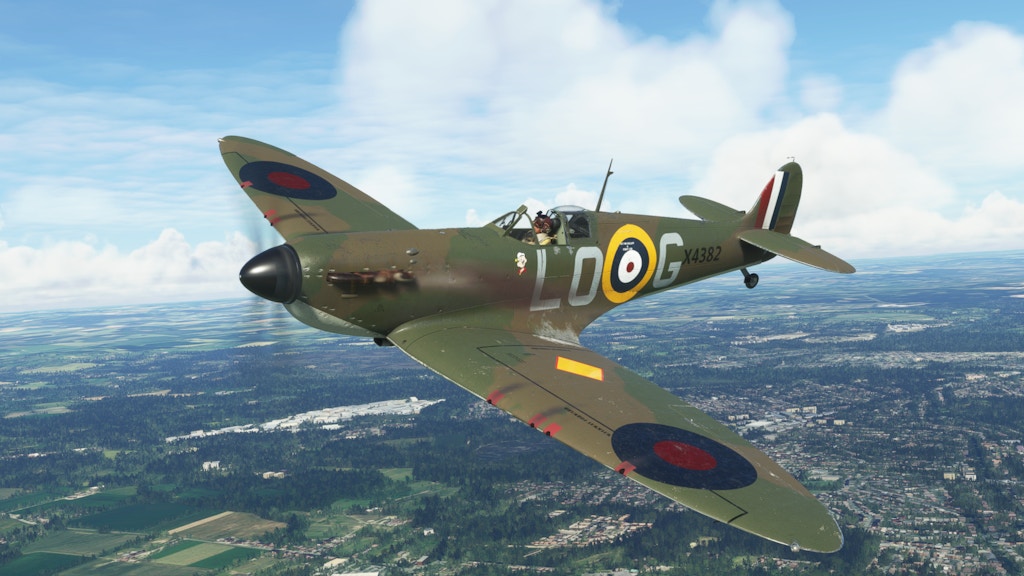
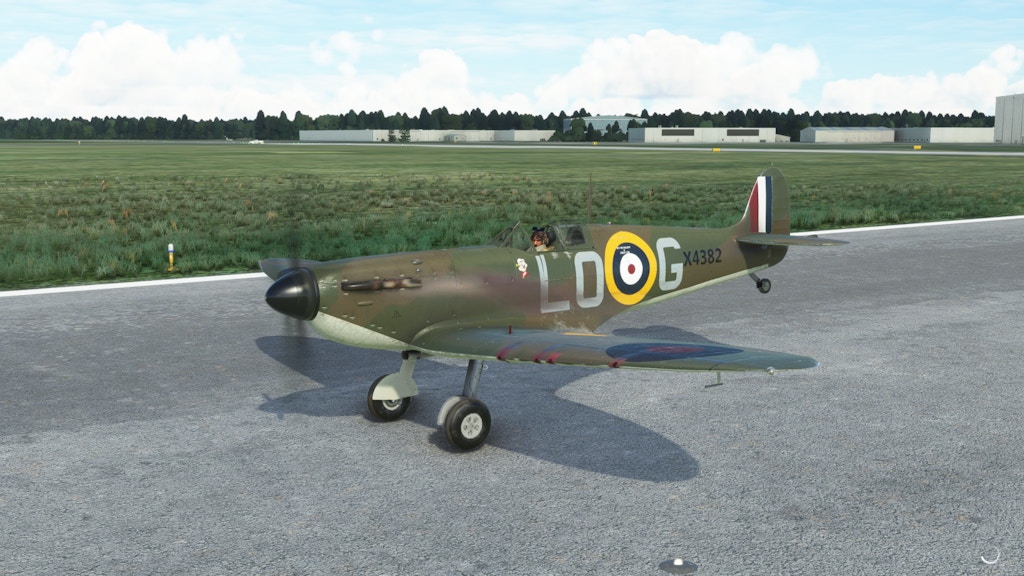
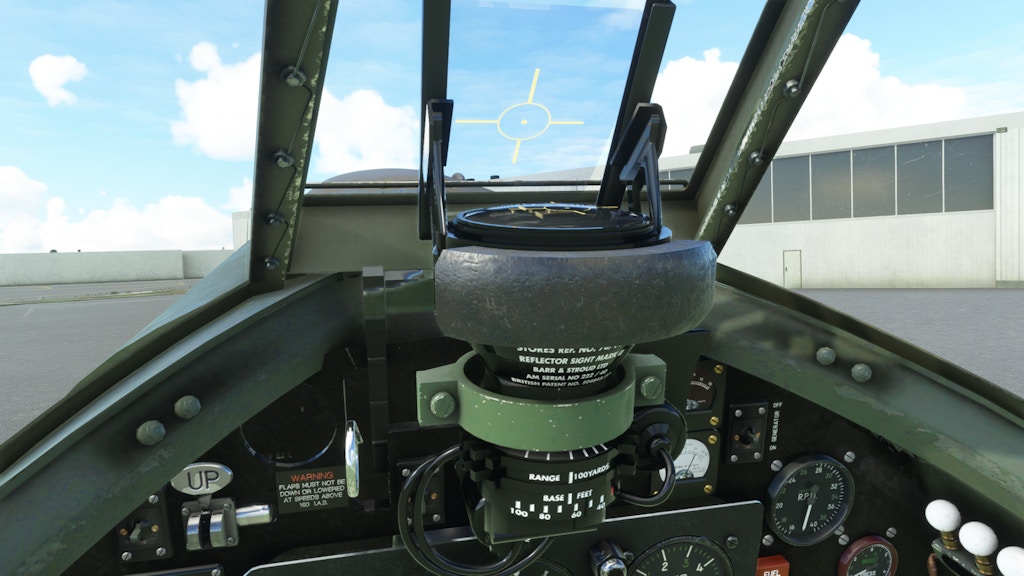


Sounds
The sounds in Aeroplane Heaven’s Spitfire are pretty good. The plane is a joy to listen to, whether it be during engine start-up, take-off or in-flight. The Merlin engine sounds distinctive and beautiful. However, sometimes the sounds fall a little flat. For example, the start-up sequence of the plane seems to be a little quick and you can barely hear the engine sputter and come to life before it’s going. Once you want to close your canopy after take-off, the sound becomes muffled and more quiet (like it should), but the sounds don’t match the visual animation/duration of closing the canopy. The sounds become muffled while your canopy isn’t even halfway closed. During cruise, the engine sounds a little bit too quiet and light, and if you push your nose down, your engine sound will become too high pitched. It all seems a little bit off the mark and it could use a little bit more tuning in my opinion. Not to say that the team didn’t do a good job, because the sounds of the plane are by no means bad, but I think they could use a little bit more refinement.
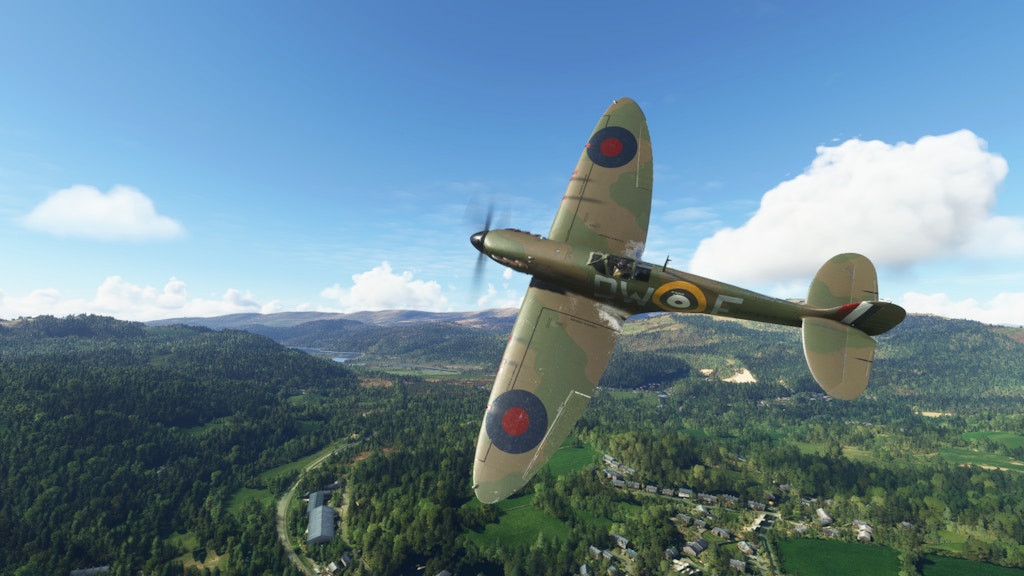

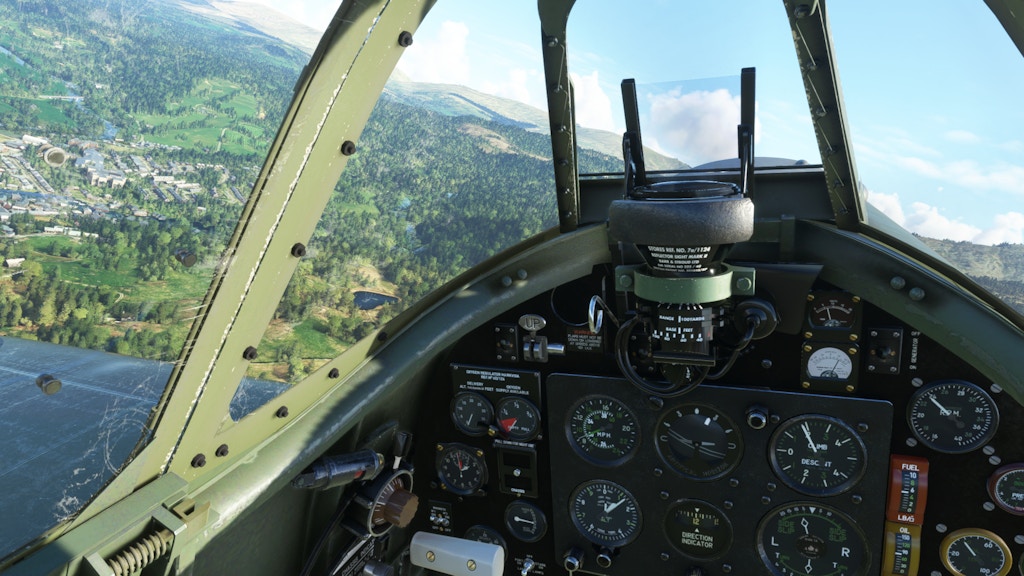
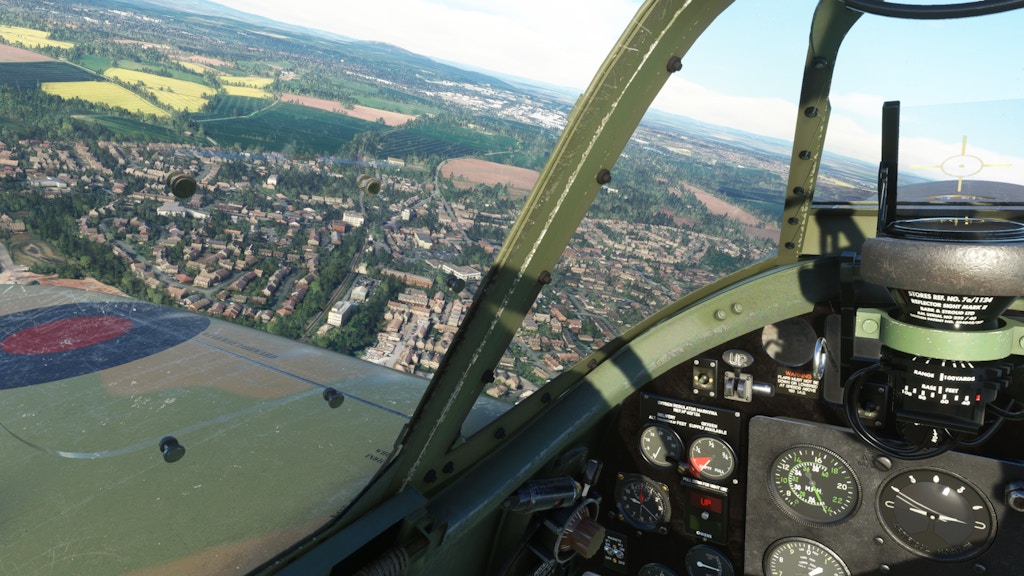

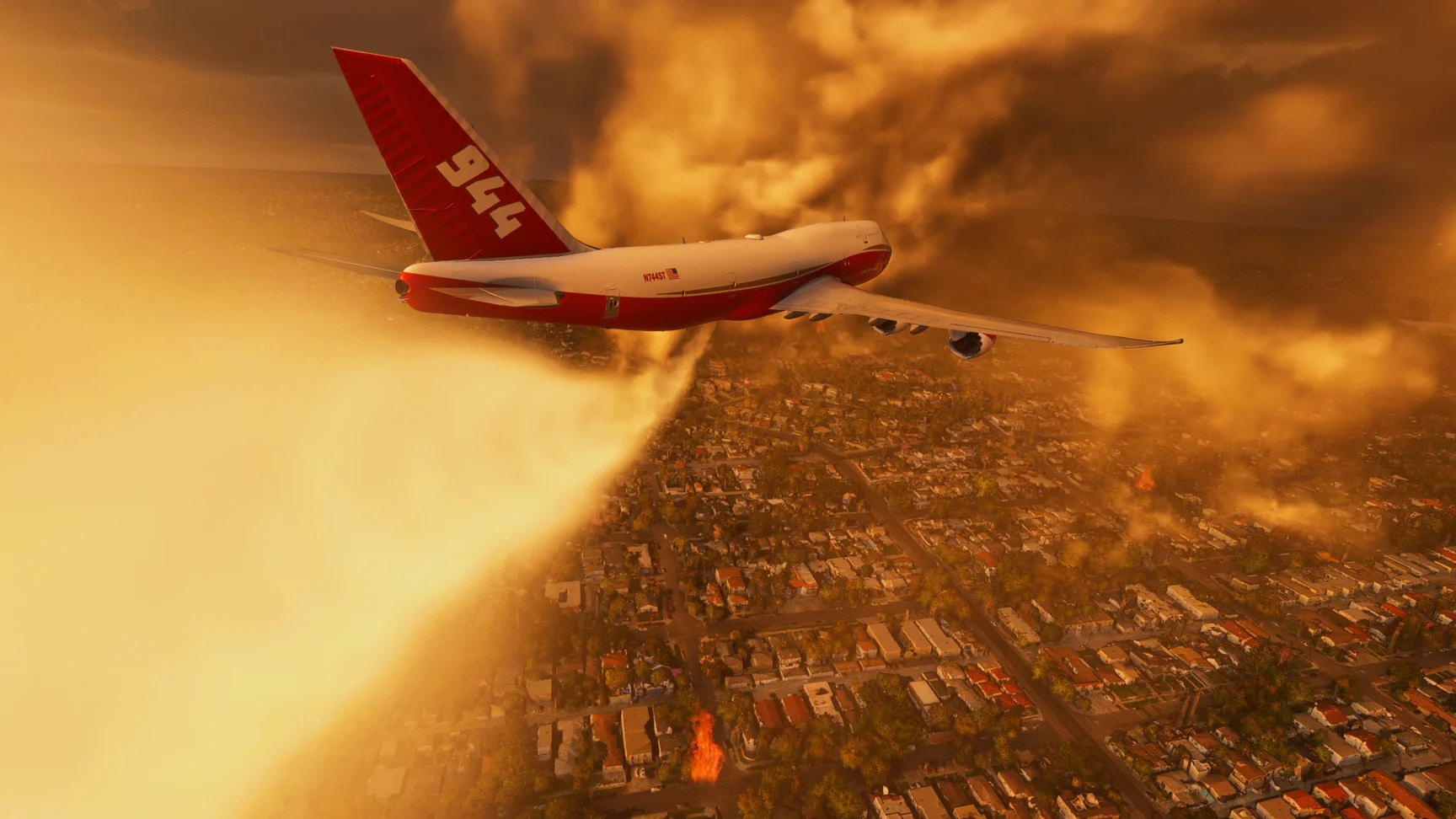
Closing Remarks
Aeroplane Heaven’s Spitfire is absolutely beautiful. The modelling is of very high quality, as are most of the textures. The sounds are all good, although not excellent. And then there is a list of issues, such as the lack of cockpit animations, the issues with click spots, the lighting issues with the beacon, and the fact that the gunsight shade control literally floats in the air and is not attached to anything. Not to mention the simulation of the engine performance and temperatures that don’t seem very authentic. It makes it hard to write this review, because I think the Aeroplane Heaven Spitfire is amazing and so much fun to fly. I think the team did an amazing job recreating this beautiful plane, and it would not be fair to say that it’s riddled with bugs and issues. Yet, it would also not be fair to say that all these small issues can, or should, be overlooked. This plane is really beautiful and fun to fly, but all the issues, large and small, add up. It’s a balancing act and I wish it wasn’t. At the end of the day, you won’t be disappointed if you end up getting this plane. However if you’re really into warbirds, vintage planes or just the Spitfire, you might end up wishing it did things a little bit better than it does at the moment.






